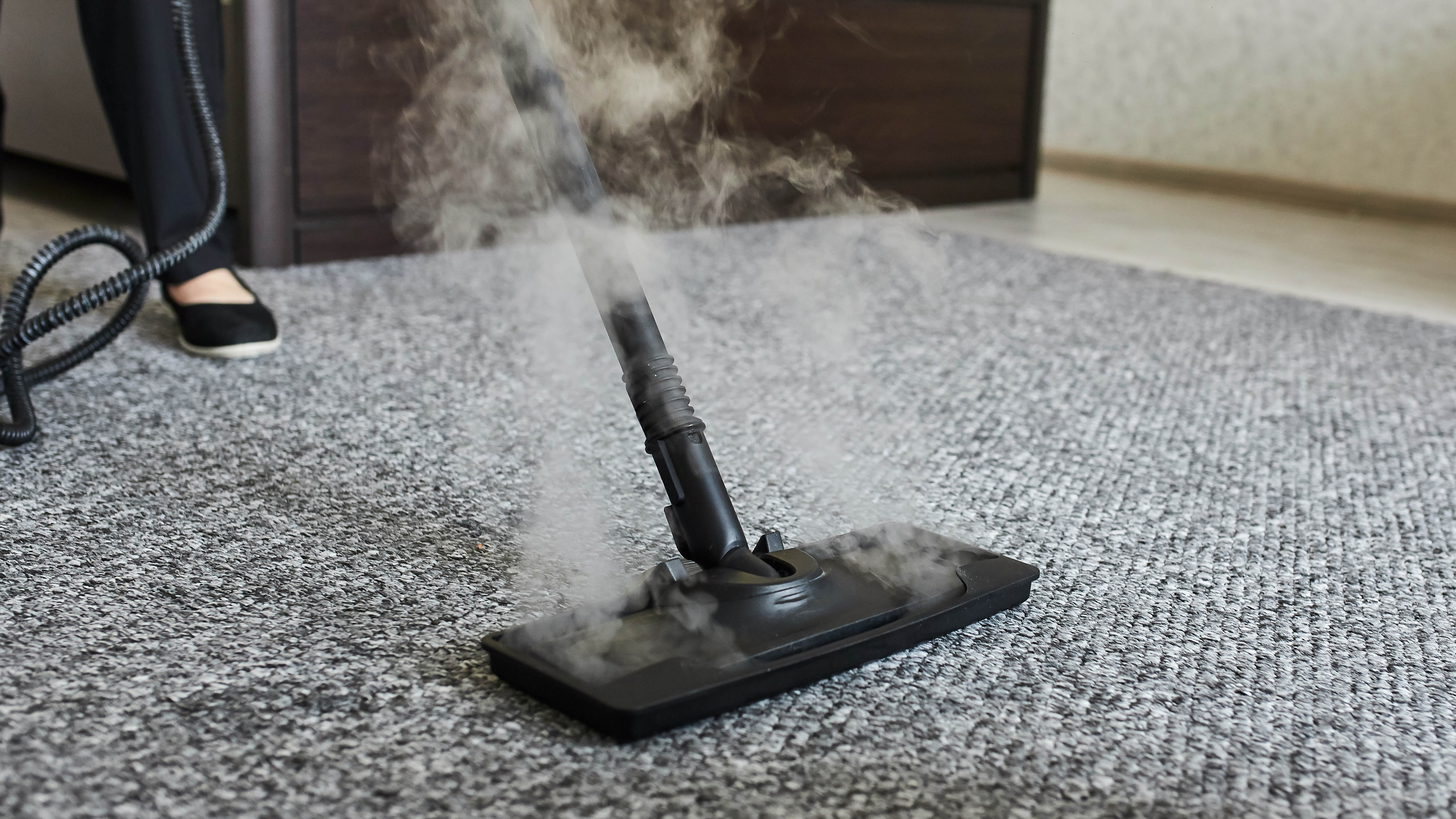9 ways to get rid of carpet beetles with or without chemicals
Here’s what you need to know if you’ve spotted carpet beetles

All kinds of pests can make an appearance in our homes. Some are more obvious than others. For instance, it’s hard to miss a mouse scurrying across the room, or a cockroach crawling out from a toilet. But, some pests are harder to spot, and yet can still leave a significant amount of damage behind. Carpet beetles are such an example.
At the larva stage, carpet beetles love to feast on natural fabrics. Because of this, any soft furnishings or clothes, particularly those made of organic animal-based materials, can serve as a smorgasbord. Stored foods, such as grains and seeds, can be an attraction too for certain species. Once they tuck in, that’s when their presence becomes known. They leave behind holes in what they eat, much in the same way that moths do. Depending on the food source and the extent of the infestation, carpet beetles can cause no end of damage. While their diet shifts to pollen once they reach adulthood — which is why they originate from outside — they will lay eggs at this stage, which can exacerbate the problem.
Luckily there are ways to deal with these pests, both with and without chemicals. Depending on how you want to handle the situation, we cover both here. Here’s how to get rid of carpet beetles.
Natural methods
1. Remove easy food sources

The first step is to remove any obvious food sources where you can. While this will, no doubt, be tricky, there are steps you can take. For instance, running one of the best vacuum cleaners over your carpets and hard floors can collect residual hair and debris which the larvae may feast on, as well as removing potential carpet beetles and eggs at the same time. Make sure you use the crevice tool to reach all the way into the crevices by the baseboards. Underneath furniture and window sills are a popular hiding spot for these insects too. Throw away the dust bag once you're finished.
As a side note, most carpets are synthetic, which carpet beetles generally won’t eat — they’re actually searching for food sources on your carpet, which is why vacuuming is an effective method. It’s also why your animal-based rug may take damage while your carpet appears spotless. For this reason, it’s good practice to keep a clean home to deter such pests. You should wash soiled clothes immediately for instance, which may also serve as a food source.
Store your pantry items in airtight containers as well, such as this OXO Good Grips POP Container ($15, Amazon). Certain species of carpet beetle eat flour, seeds and grains, so keep such foods sealed away.
2. Steam clean your floors

It’s also good practice to steam clean your carpets once you’ve finished vacuuming. The high temperature of the steam will kill any remaining carpet beetles and eggs on contact. Just make sure the steam cleaner you intend to use is suitable for this surface. An example would be this PurSteam Steam Mop Cleaner ($59, Amazon). Some are only suitable for use on hard floors.
Sign up to get the BEST of Tom's Guide direct to your inbox.
Get instant access to breaking news, the hottest reviews, great deals and helpful tips.
Move the furniture out of the room when you steam your carpet. Work your way around in sections and once you’ve finished, leave the space to dry for at least 24 hours — even if it feels relatively dry. Open windows and doors to ventilate the room and release the moisture. One of the best dehumidifiers can help here too.
3. Diatomaceous Earth

As a natural biological powder, diatomaceous earth, or DE, is an effective pesticide. It’s effective at dissolving the exoskeleton of all kinds of pests on contact, including roaches, spiders and ticks. It essentially dehydrates and kills once they’ve passed through it.
Simply sprinkle DE in high traffic areas for carpet beetles, such as under your furniture. It’s safe to use around humans and pets so long as it’s food-grade DE, such as this 10 LBS FOOD GRADE Diatomaceous Earth ($26, Amazon). Keep in mind that you will still need to vacuum to remove the residual powder as well as any dead carpet beetles left behind though. Wear a mask while applying DE.
4. Essential oils

Essential oils can do much more than make your home smell nice. These sharp and often strong scents can be used to overwhelm an array of pests. That’s why certain plants can keep some pests out of your home — lavender, mint and sage are three such scents which are regularly used. The good news is that carpet beetles are no different. You can use essential oils to repel and kill carpet beetles. All it takes is the right method and strategic application.
Clove oil and peppermint oil are pretty effective against carpet beetles. Simply dilute a few drops with water in an empty spray bottle, mix well, and apply where you suspect carpet beetles around your home. You can grow peppermint plants for added effect as well, but we recommend you keep these in containers as they can quickly become invasive. This plant is toxic to cats and dogs as well, so avoid it if you have pets.
If mosquitoes are a problem, here are 9 plants that repel mosquitoes and keep them away from your yard.
5. Vinegar

Distilled white vinegar has a great many uses when it comes to cleaning. Its acidic nature helps it dissolve limescale and when combined with baking soda, the chemical reaction can dislodge a blocked drain. But, it can come in use when dealing with carpet beetles too. This is because these pests can’t stand the smell of vinegar — it’s just as overwhelming for them as it is for us.
So if you dilute vinegar with water (1/2 of each) in an empty spray bottle, and clean any high traffic areas, it can help mitigate the problem. Of course, you won’t want the smell of vinegar lingering in your carpet, but on hard surfaces, such as your window sills, and shelves in your wardrobe, vinegar can come in handy as both a cleaner and a pest repellent.
Chemical methods
1. Boric acid

Boric acid is a toxic chemical which is often found in many mainstream insecticides. It sticks to the pest and, once ingested, impacts the nervous system and dehydrates the host. Note though that this chemical is poisonous to both humans and pets, so should only be used with extreme caution and while wearing adequate safety equipment, including a mask and gloves.
To use boric acid, distribute the powder lightly across the room, applying it in areas the carpet beetles frequent, including carpets and furniture. Then, use a broom to brush it in and spread it around. After which, leave it to sit for a few hours (several if you can), before vacuuming it up again. More than one pass may be required to collect all traces. This should give it enough time to work. Dispose of the vacuum bag as soon as the boric acid is collected.
We recommend using alternative methods if you've got children or pets in your household. However, if you do proceed, be sure to keep kids and pets away from this space during this time.
2. Foggers

Flying insect foggers are widely available to kill carpet beetles too, an example being Hot Shot Fogger With Odor Neutralizer ($27, Amazon). Before you release the airborne ‘fog’ inside your home, make sure you follow the instructions and prepare the space. For instance, keep children and pets away, and turn off ignition sources and airflow.
Keep in mind this will only kill the adult flying carpet beetles, so you will still need to deal with the remaining larvae. But, at least this prevents further eggs from being laid. It’s a good idea to keep a dedicated insecticide spray on standby, in case more adults make an appearance down the line. Opt for a fogger which won’t leave residue behind on your furniture as well.
3. Dedicated insecticide

An insecticide spray can help remove carpet beetles too. There’s a huge array of these widely available, although it’s admittedly tricky to find one which specifies its effectiveness on carpet beetles. You’re looking for a solution which contains any of the following ingredients: cyfluthrin, deltamethrin or bifenthrin. Be sure to test it on an inconspicuous area first.
It’s worth noting that insecticides derived from plant-based ingredients are available too, such as this BugPursuit: 24oz Indoor Pest Control ($24, Amazon). These tend to be non-toxic with essential oils as a core ingredient, making them safe to use around children and pets — but you should always check the label to confirm. We recommend sticking to these non-toxic alternatives.
4. Moth balls

If your wardrobe is where the problem lies, moth balls can help you out. These kill carpet beetles, as well as their eggs and larvae, by releasing a chemical vapor when stored alongside your clothes. Place these inside airtight containers to keep the vapor contained, and make sure they remain out of reach of children. Enoz Para Moth Balls ($14, Amazon) claims to be effective on moths as well as carpet beetles.
If all else fails, or you’re uncomfortable dealing with this pest yourself, call in a professional to deal with a carpet beetle infestation.
More from Tom's Guide

Katie Mortram used to be a Homes Editor for Tom's Guide, where she oversaw everything from kitchen appliances to gardening tools, as well as smart home tech. Specializing in providing expert advice for cleaning and home manintenance, she now works as Household Advice Editor for Good Housekeeping.
